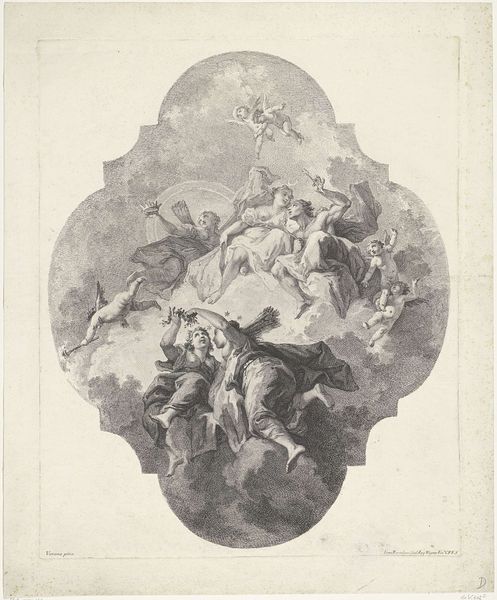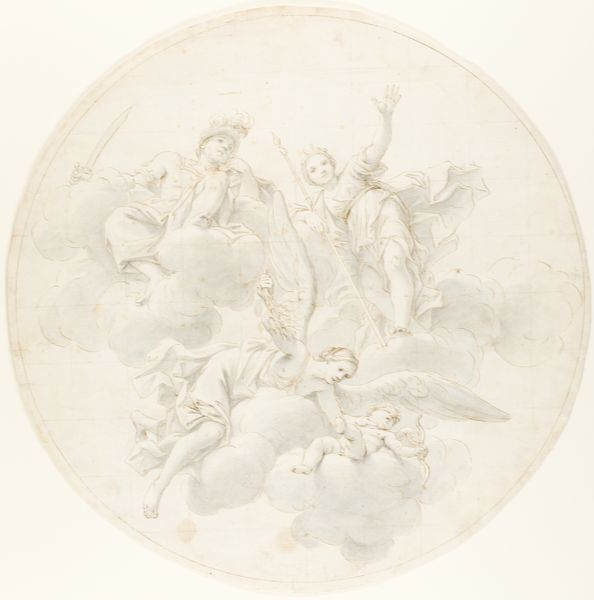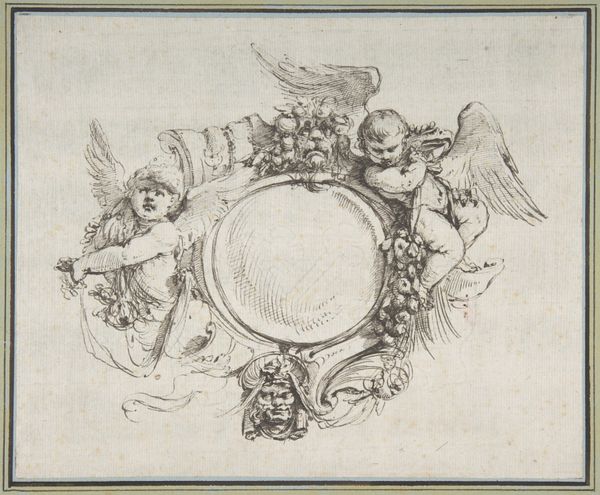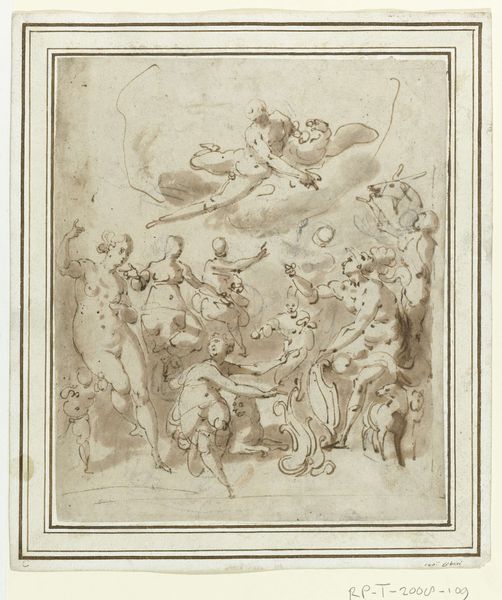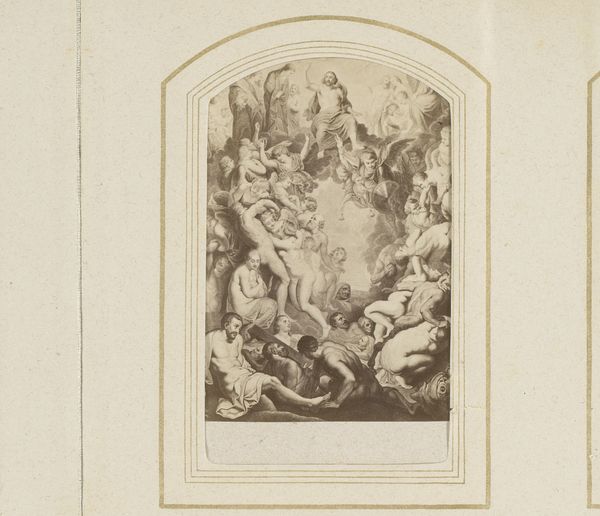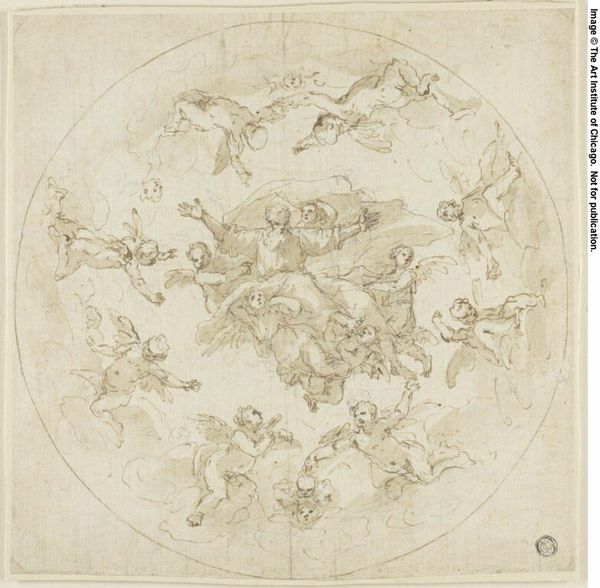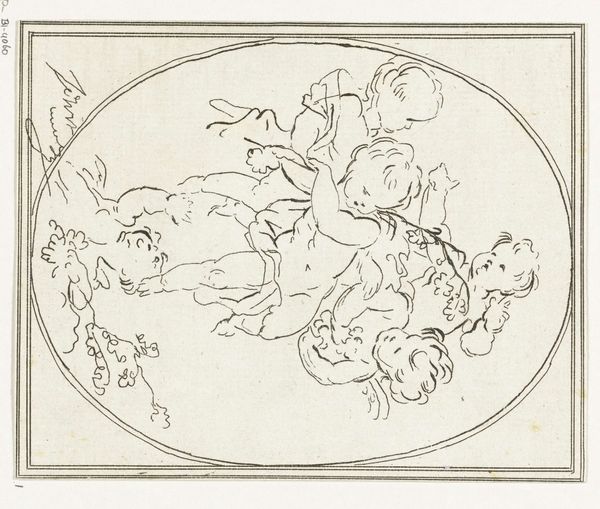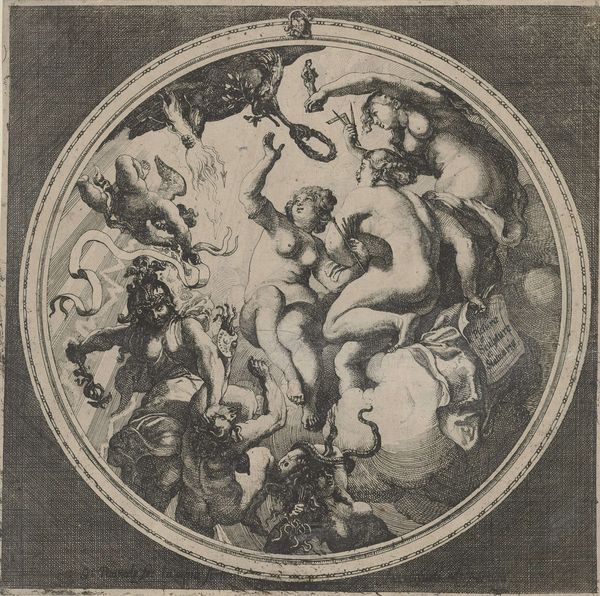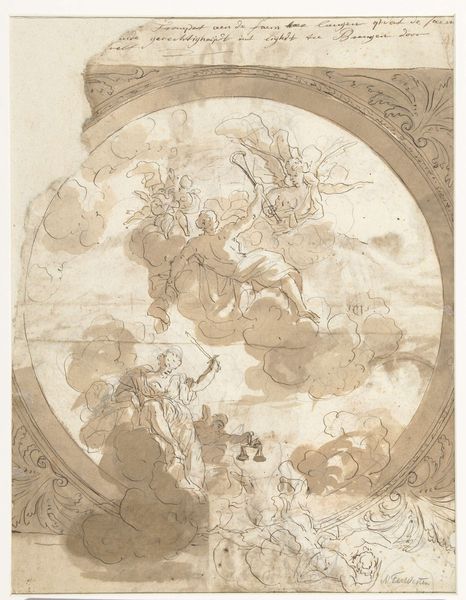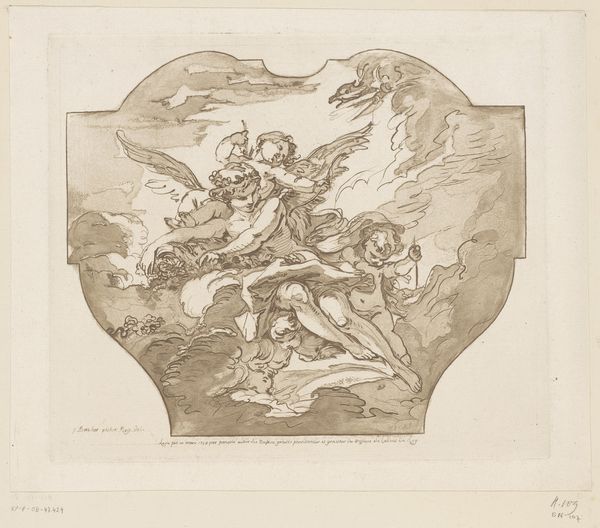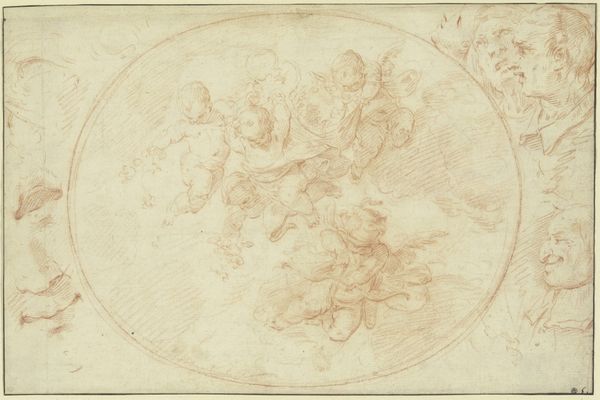
drawing, paper, ink
#
portrait
#
drawing
#
quirky sketch
#
allegory
#
baroque
#
pen sketch
#
old engraving style
#
figuration
#
paper
#
personal sketchbook
#
ink
#
sketchwork
#
ink drawing experimentation
#
pen-ink sketch
#
sketchbook drawing
#
storyboard and sketchbook work
#
sketchbook art
Dimensions: height 131 mm, width 132 mm
Copyright: Rijks Museum: Open Domain
Editor: We’re looking at "Het element water," or "The Element Water," a drawing from the first half of the 18th century by Jacob de Wit, rendered in ink on paper. There's a delicate quality to the lines, a certain buoyancy. How should we interpret this image of frolicking cherubs? Curator: This drawing allows us to consider the broader public role of allegorical imagery in the Baroque period. De Wit created many ceiling paintings. What purpose would this sketch serve in that context? Editor: Possibly a study for a larger ceiling piece? What I'm seeing are putti surrounded by water motifs – clouds, suggestion of waves... Perhaps destined for a wealthy patron's home, designed to impress? Curator: Precisely. These allegorical representations of the elements, often displayed so prominently, were status symbols. Think about the message it conveyed – knowledge, wealth, a connection to classical learning and mythological narratives. De Wit positions the patron within a powerful visual and intellectual tradition. Where do you think this puts pressure on art? Editor: Does that almost turn into propaganda? An upper class showing off, I mean. Creating art just for political messaging sounds awful. Curator: It certainly complicates our view of Baroque art. It urges us to consider whose voices and perspectives were amplified, and whose were suppressed, by these visual displays of power. What might viewers at the time have thought, especially those who were not the elite patrons? Editor: That really shifts my thinking. I came in thinking cute cherubs, and now it’s making me question social structures and political intentions of wealthy people. Thanks, I appreciate that. Curator: Indeed, art whispers about political power! A good reminder to look critically at whose stories are told, and how they’re told.
Comments
No comments
Be the first to comment and join the conversation on the ultimate creative platform.
